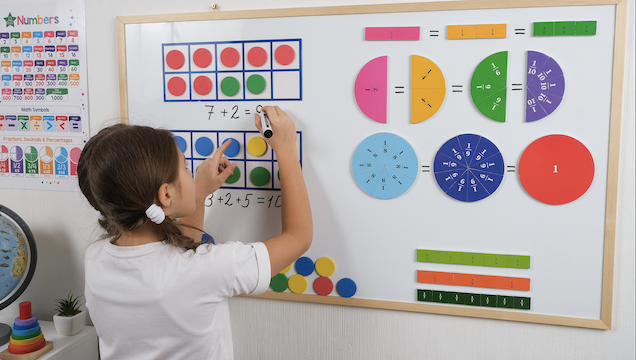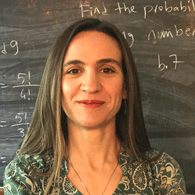What counts as “evidence-based” teaching in mathematics? Given calls by the Grattan Institute to end the lesson lottery and make a maths guarantee, this question matters. Explicit teaching is always part of a high-quality lesson sequence. But defining it as the ultimate pedagogy sidelines the very practices that engage students in mathematical thinking. Students need more than procedural recall and routines without reasoning if they’re going to thrive in a rapidly changing world.
Why is explicit teaching making a comeback?
In signing the Albanese government’s Better and Fairer Schools Agreement, Australian states and territories have committed to provide all students with highly effective evidence-based teaching and equitable learning opportunities.
This is translated as adopting the Australian Education Research Organisation’s (AERO) advice on explicit instruction as “what works best” when it comes to teaching fundamentals like reading and mathematics.
In its explainer on how to optimise learning, AERO describes explicit instruction as follows:
‘Teachers directly explain to students how to complete a task, why the task is important, and how the task relates to and extends their previous knowledge. Demonstrations of how to perform tasks or solve problems are provided, often using worked examples.’
It is important to note that AERO’s valuing of explicit instruction stems from a narrow interpretation of the purpose of school education and what counts as research evidence. The studies AERO favours are typically randomised controlled trials not set in school classrooms. Seeking to transform teaching practice by generalising research findings made in tightly controlled environments is problematic. Why? Because these settings are often worlds apart from real classrooms. As the OECD notes, the reality for teachers is often unpredictable classrooms, where students have diverse and competing needs, resources are limited and time is constrained.
Policy is being used to deliver instructional fidelity
Yet, for the first time, education policy is being used to deliver instructional fidelity. The NSW Department of Education School Excellence Framework states: “Explicit teaching is the main practice used in the school.” In the Victorian Teaching and Learning Model Version 2.0, explicit teaching is the only pedagogy mentioned.
In both these states, departments of education have produced detailed guidelines outlining what explicit teaching is and isn’t. They also provide lesson banks to help teachers align their teaching practice with these specifications. Across the Catholic system, instructional resources developed by AERO’s preferred partner, Ochre Education, are now widely used.
As a result, the classroom experience for many young Australians is now the use of universal slide decks that follow the “gradual release of responsibility” model. It borrows from literacy research and is sometimes referred to as the “I do, we do, you do” lesson structure. According to AERO, this involves the teacher modelling how to do mathematics and monitoring for 80% of students to achieve mastery before moving to any form of meaningful independent practice. This enactment tends to focus teachers and students on perfecting procedures and algorithms. This leaves less time for real world problem-solving experiences that more holistically develop mathematical thinking.
To adhere to these directives is to ignore decades of mathematics education research.
So, what is the evidence for effective mathematics teaching and learning?
The truth is there is no magic bullet.
Studies have shown that when teachers combine student- and teacher-centred pedagogies, students do better. In fact, an OECD analysis identified three broad teaching strategies described as active learning, cognitive activation, and teacher-directed instruction. The OECD inked exposure to these teaching strategies with student performance on its PISA mathematical literacy assessment. It found strategies for active learning and cognitive activation were more effective than explicit or direct instruction. However, teacher-directed instruction was what students mostly experienced, despite this mode of instruction being least impactful for mathematics performance.
Another OECD PISA analysis found teacher-directed strategies can support student success on easier tasks. But as problems become more difficult, students with more exposure to teacher-directed instruction no longer have a better chance of success. This is because too much teacher talk limits students’ opportunities to take ownership for thinking mathematically without close guidance. This insight is consistent with studies that show student-centred pedagogies are particularly effective in developing student initiative, responsibility and working mathematically.
Of course, it is important to teach explicitly and to make mathematical language and representations clear and visible. But flexibility is key. What works is contingent on the circumstances, including curriculum learning outcomes, learner profiles and the mathematical foci for the lesson.
Strong mathematics and numeracy leadership also matters
The presence of an expert mathematics teacher who has input into school policy decisions and knows how to develop others’ teaching practice is a key feature of schools that perform highly in mathematics.
For example, a substantive study commissioned by the Australian Chief Scientist analysed data from 52 case study schools. Each of these schools had an increase of 1 standard deviation or more in their NAPLAN results. Data collected from hundreds of school leaders, teachers and students across these settings revealed organisational factors that underpin success.
These schools were committed to teaching mathematics for deep understanding. They valued student-centred learning, including student talk for understanding. They also took a consistent (not uniform) approach to local curriculum planning and had high levels of teacher autonomy. This means teachers were trusted to select teaching resources and pedagogies that met their students’ needs and interests.
We need to make maths real
A recent report explained that the telling and testing students typically experience in school mathematics is often at odds with developing positive feelings or a long-term interest in the subject. Parents and teachers want mathematics lessons to be more engaging and real-world relevant so young people learn to use mathematics to think critically and make decisions.
Studies of student motivation have shown teaching mathematics through interesting and challenging real world examples motivates students to choose the subject in senior secondary years and pursue mathematics-related careers.
That’s why curriculum writers have tried to position young people as active in the process of developing mathematical knowledge, skills, proficiencies and processes.
It is through actively doing mathematics – not watching slide decks and memorizing procedures – that young people develop the kind of mathematical thinking they’ll need beyond the school gates.
Explicit teaching may be a solution to some problems in mathematics education, but it is not the only solution to all problems, all of the time.

Carly Sawatzki and Jill Brown are mathematics education researchers at Deakin University’s School of Education and in the Centre for Research for Educational Impact (REDI). Laura Tuohilampi is a mathematics education researcher at UNSW and the founder of Math Hunger and Maths for Humans. The authors’ work helps teachers connect the school curriculum with the real world, making mathematics education lifeworthy for today and tomorrow.
The authors wish to acknowledge the contributions of professional educators who provided insights and feedback that shaped this article.






